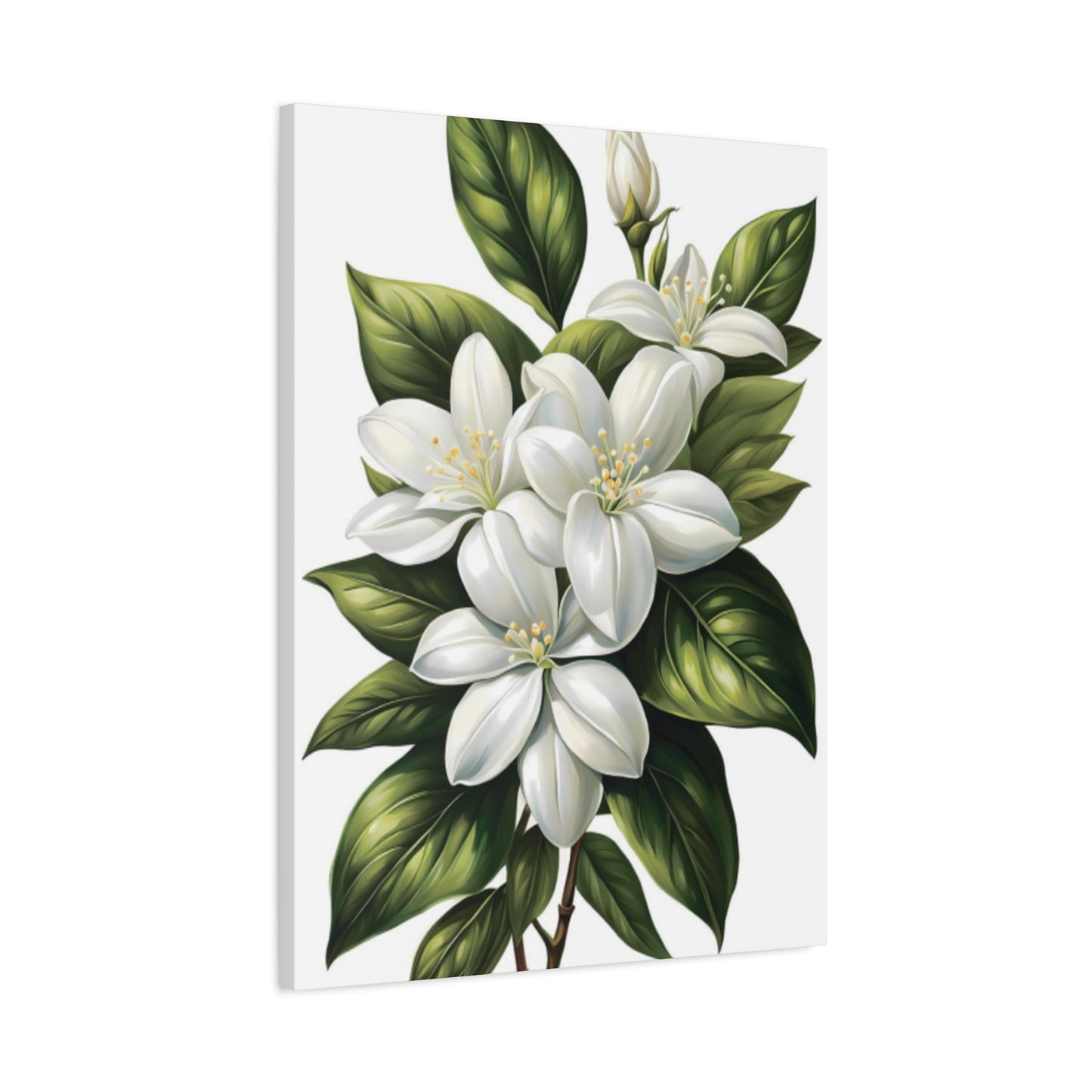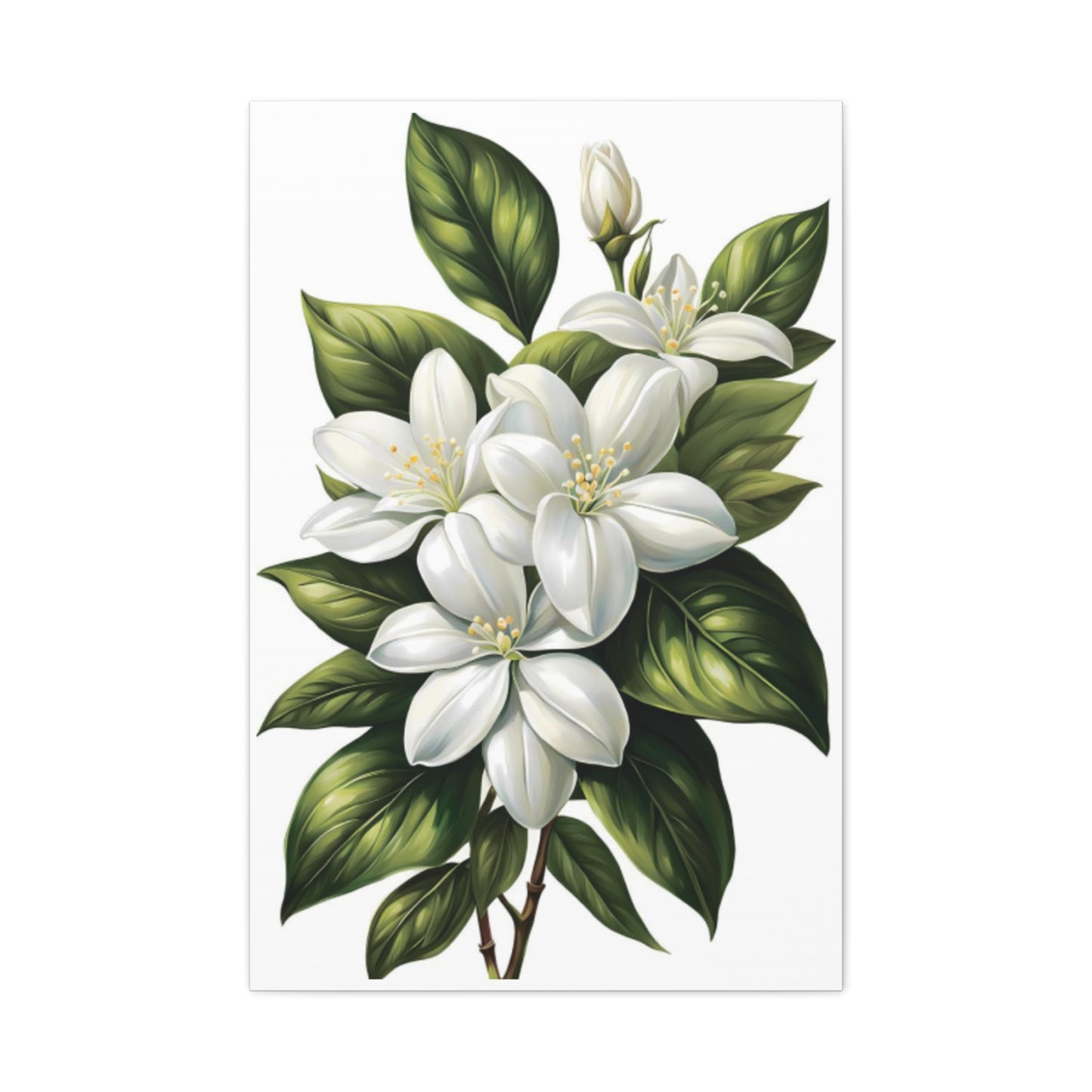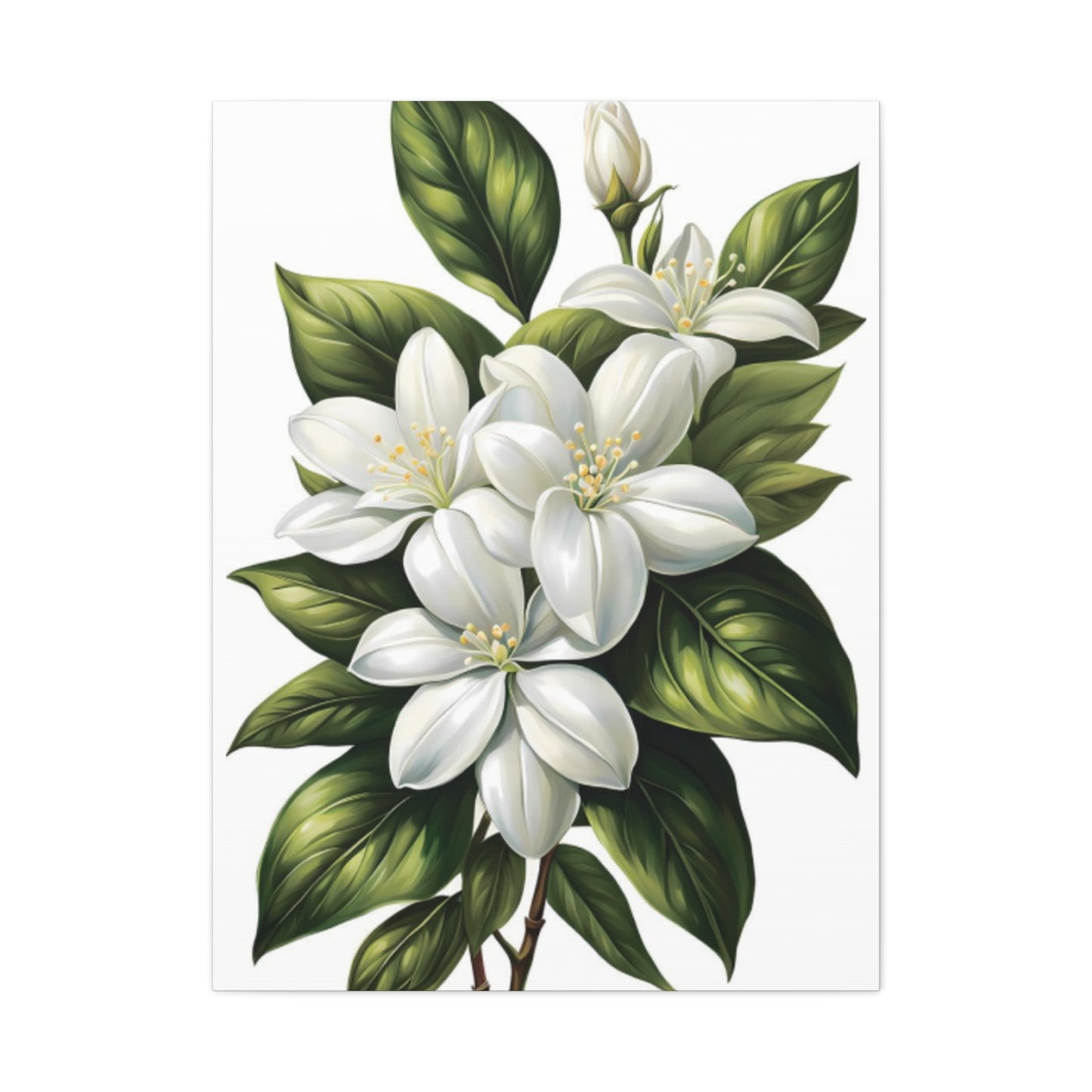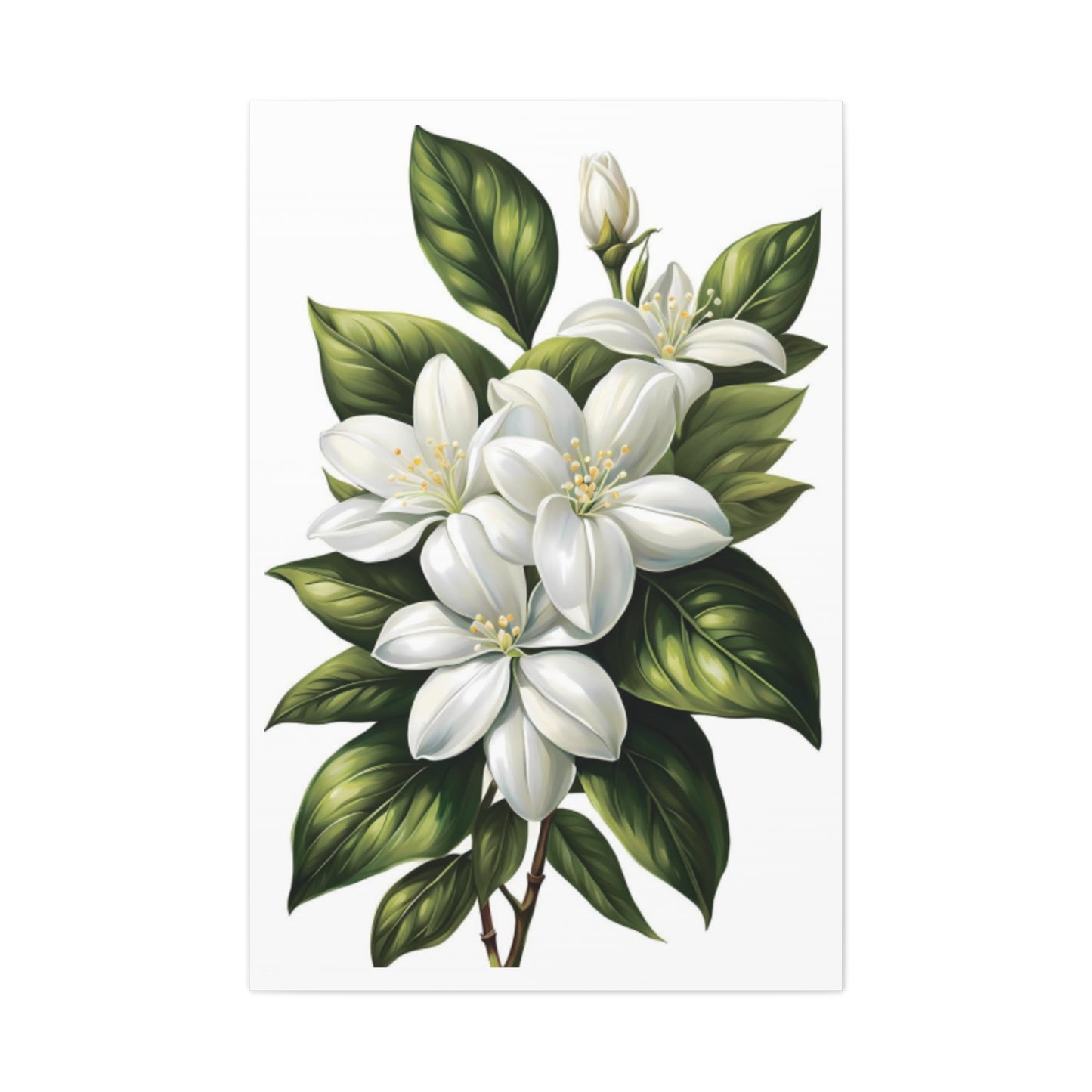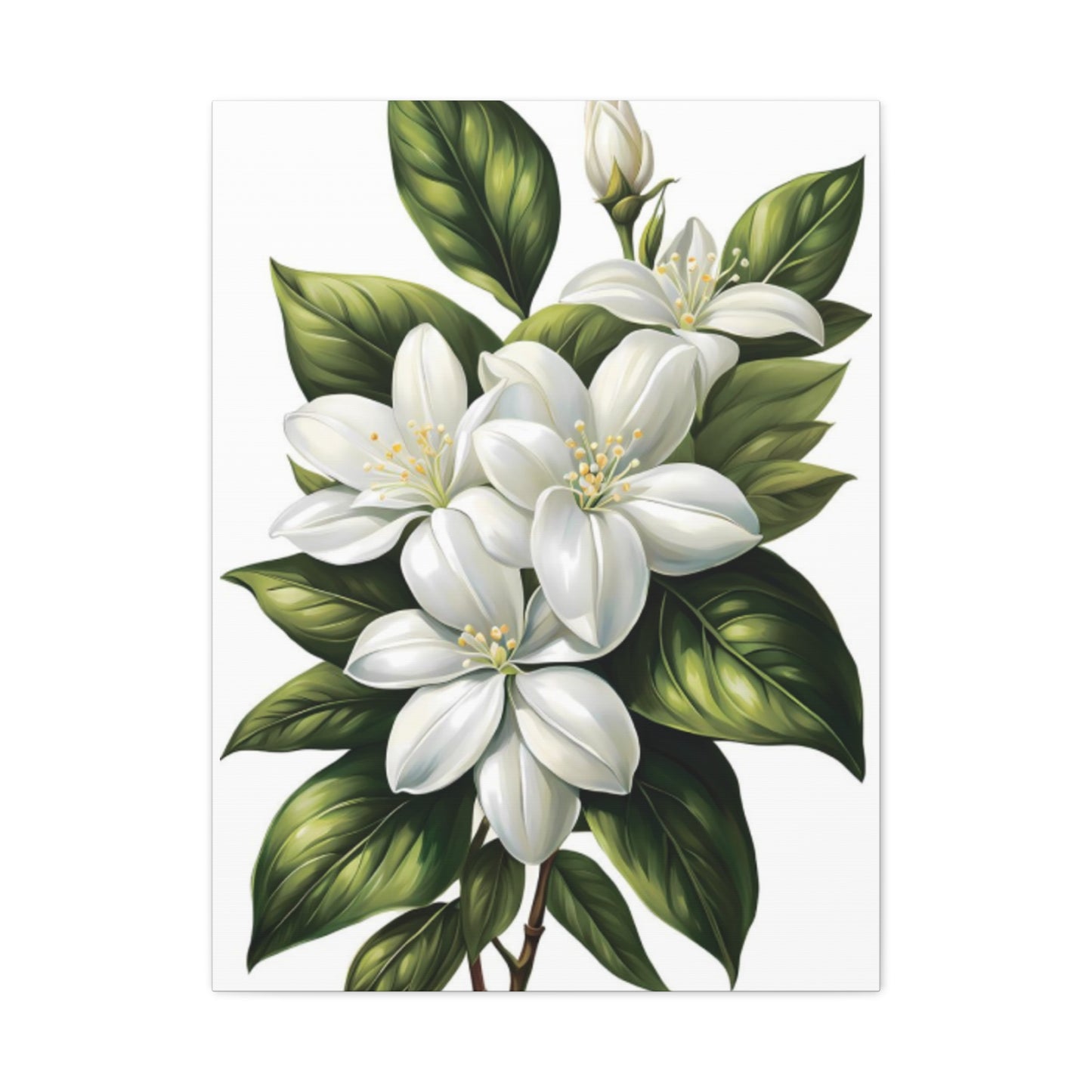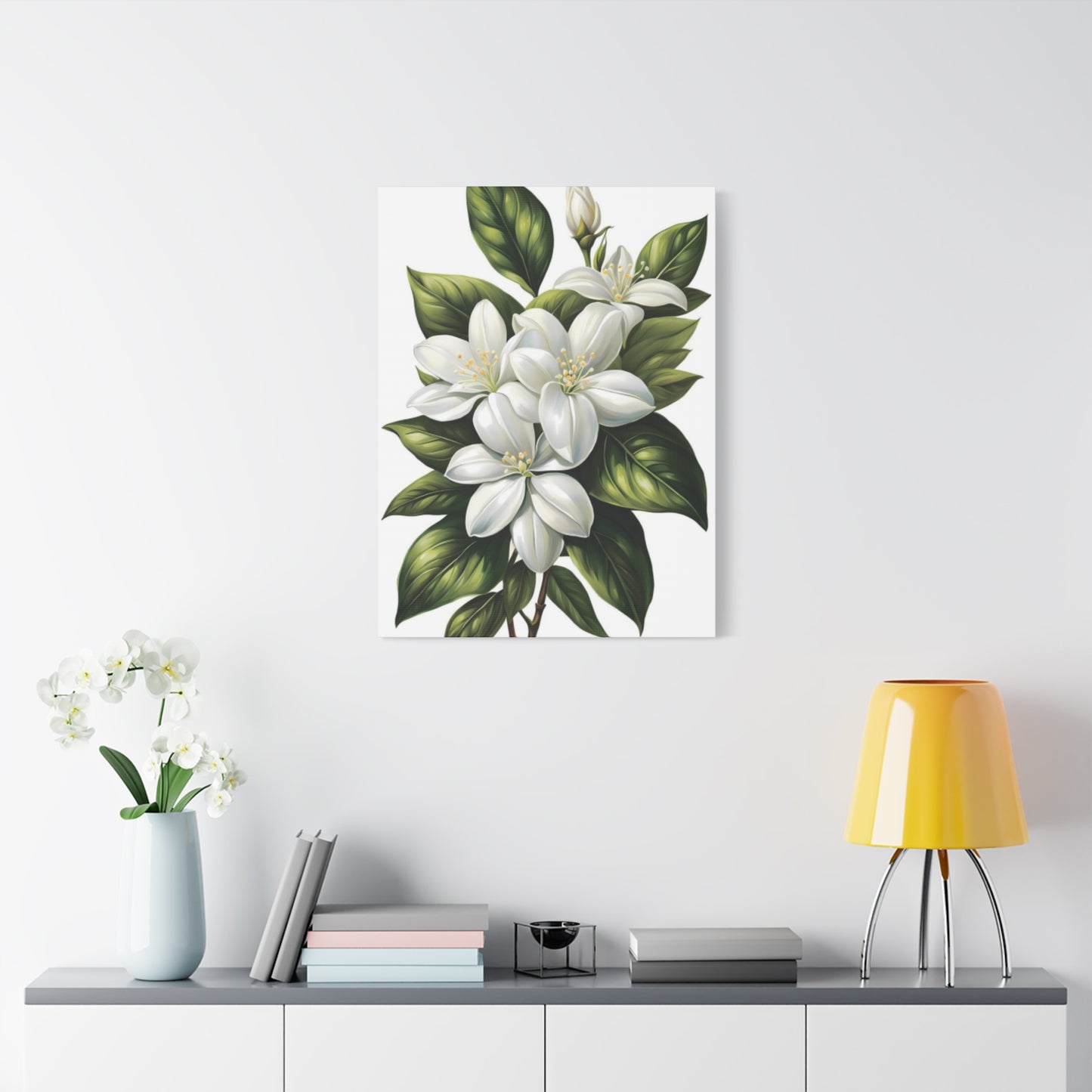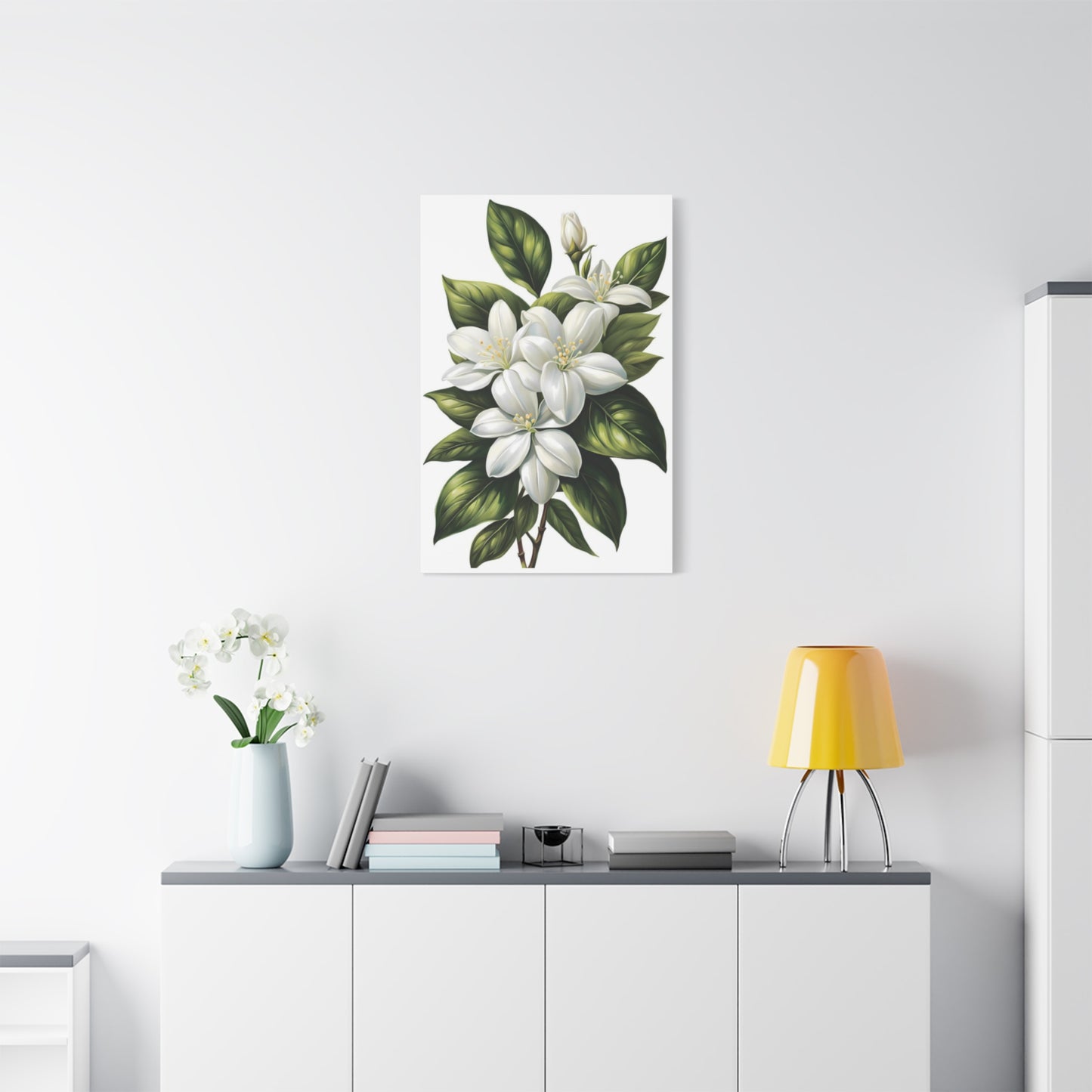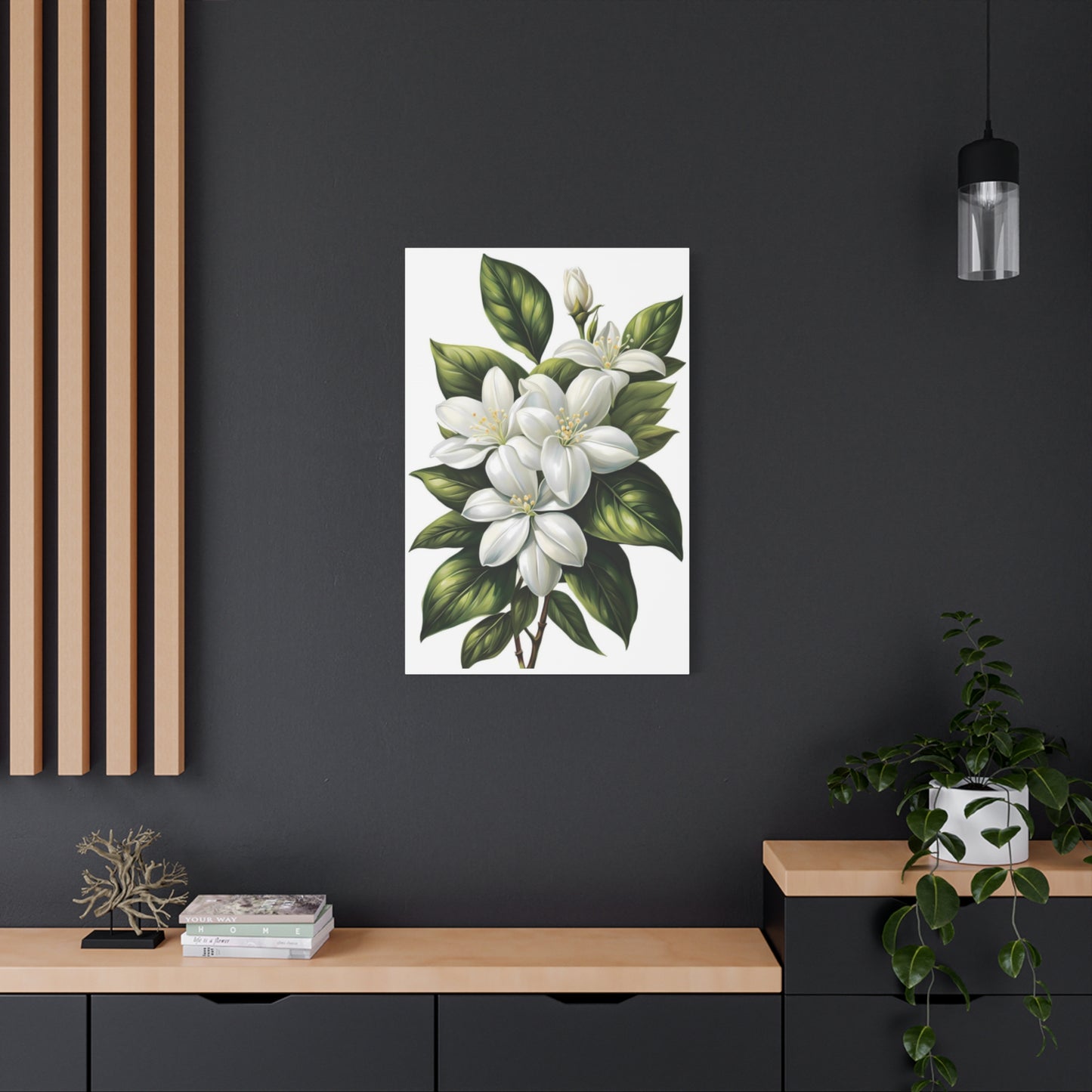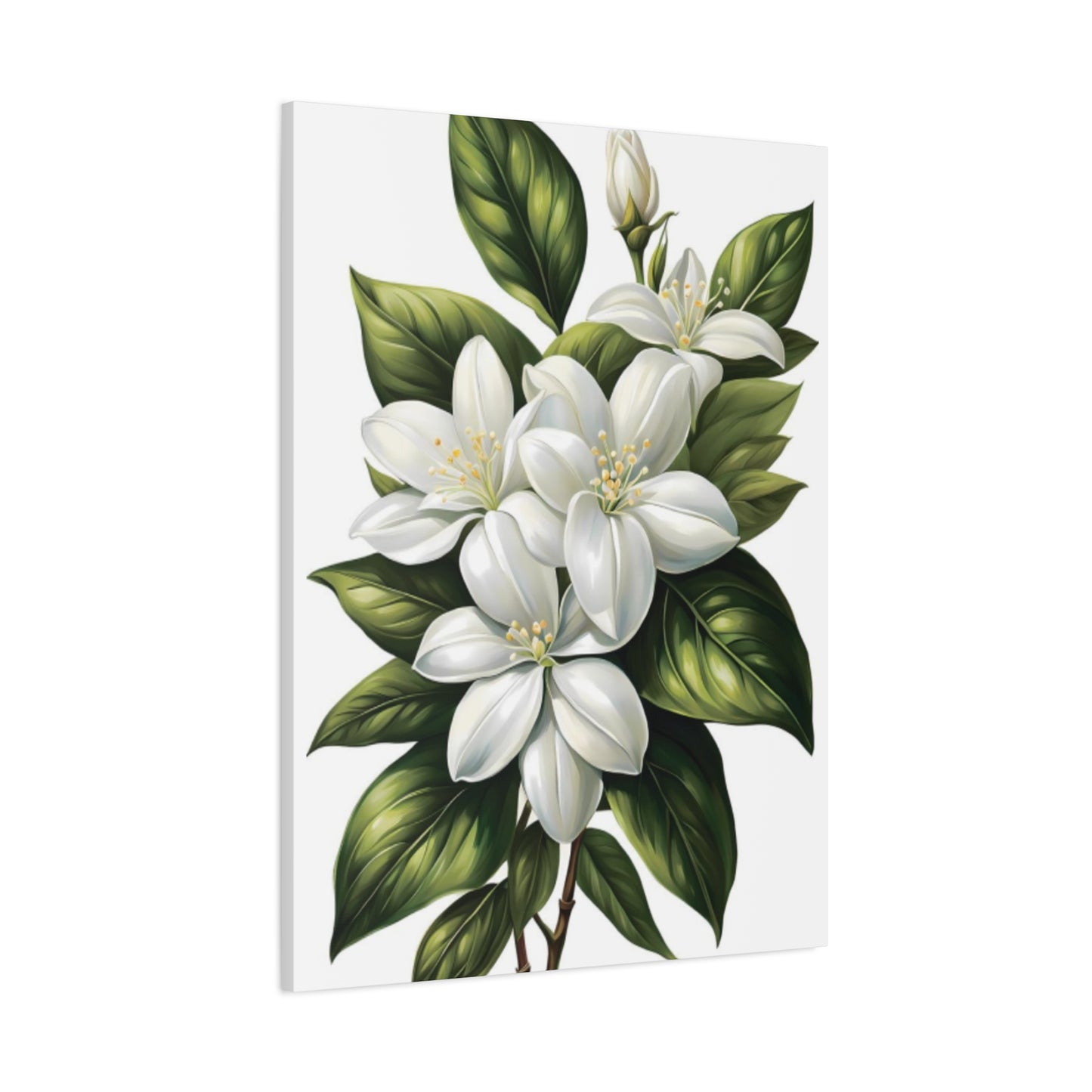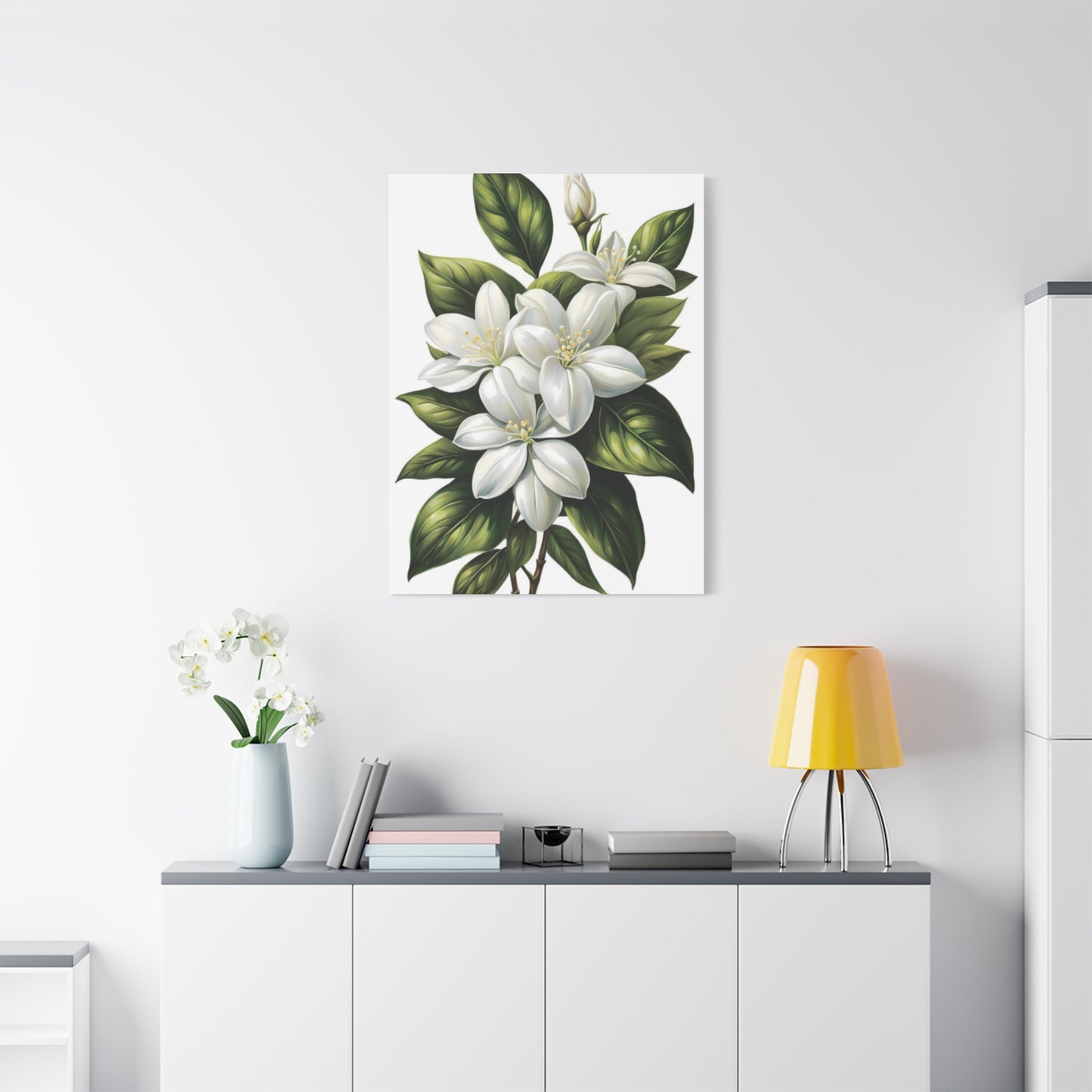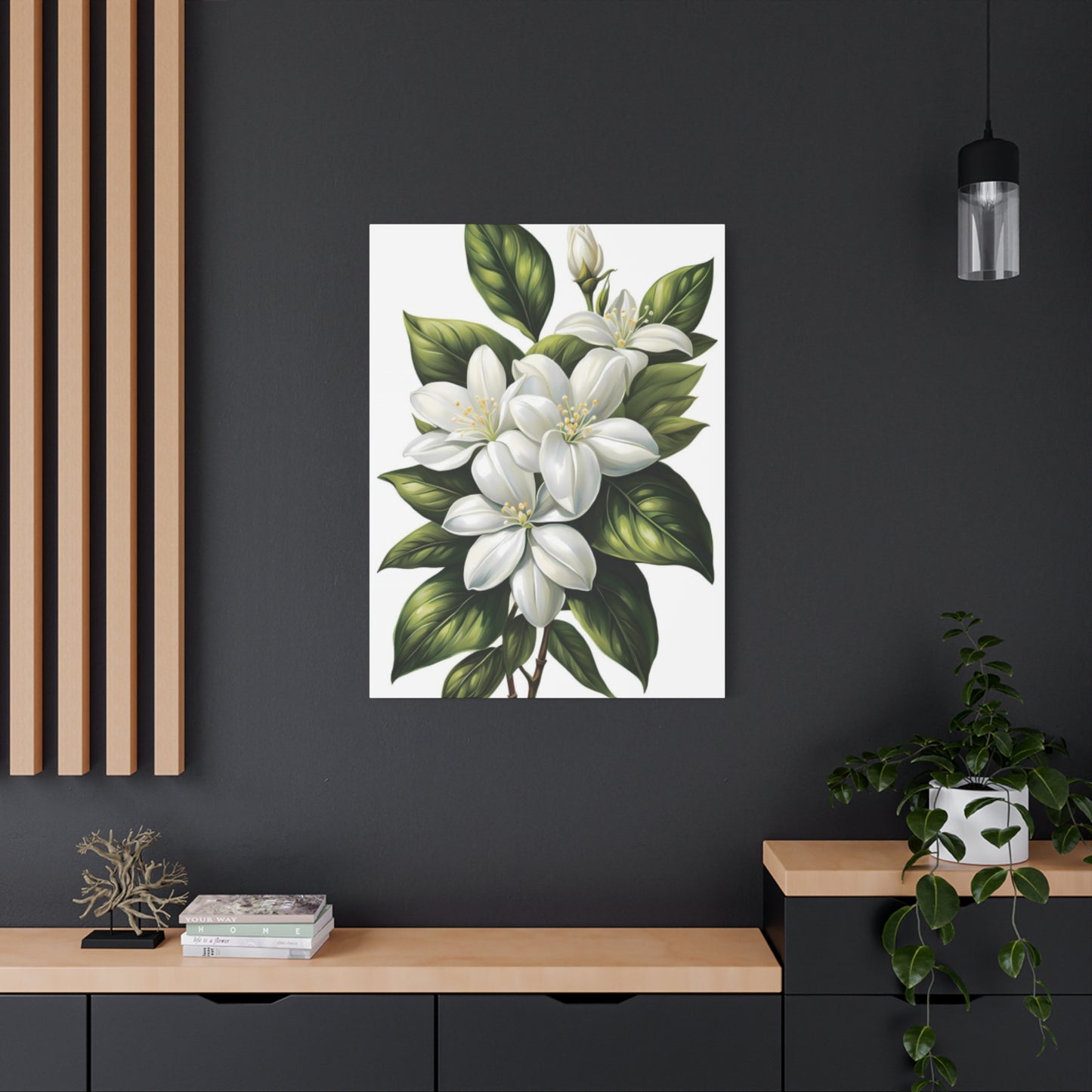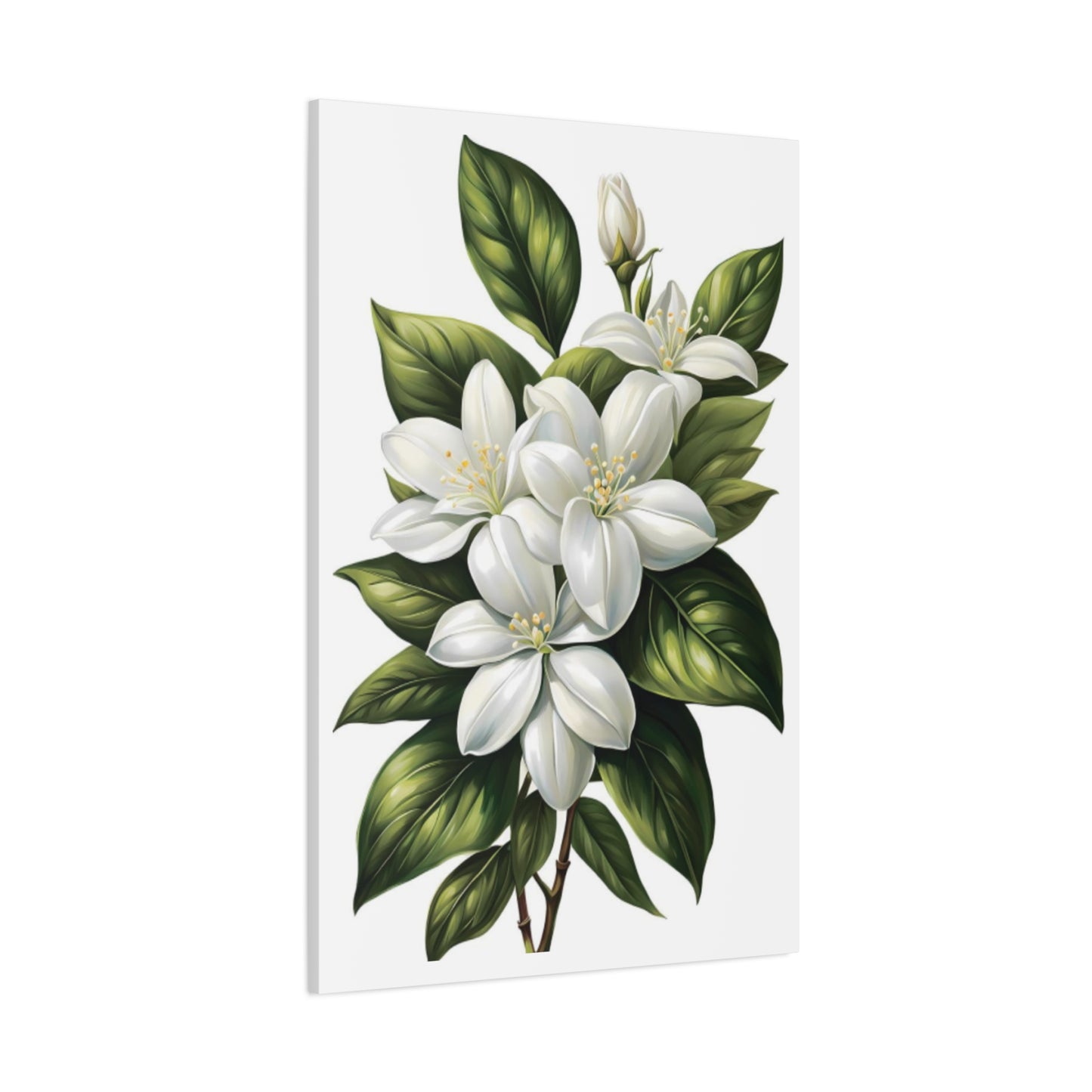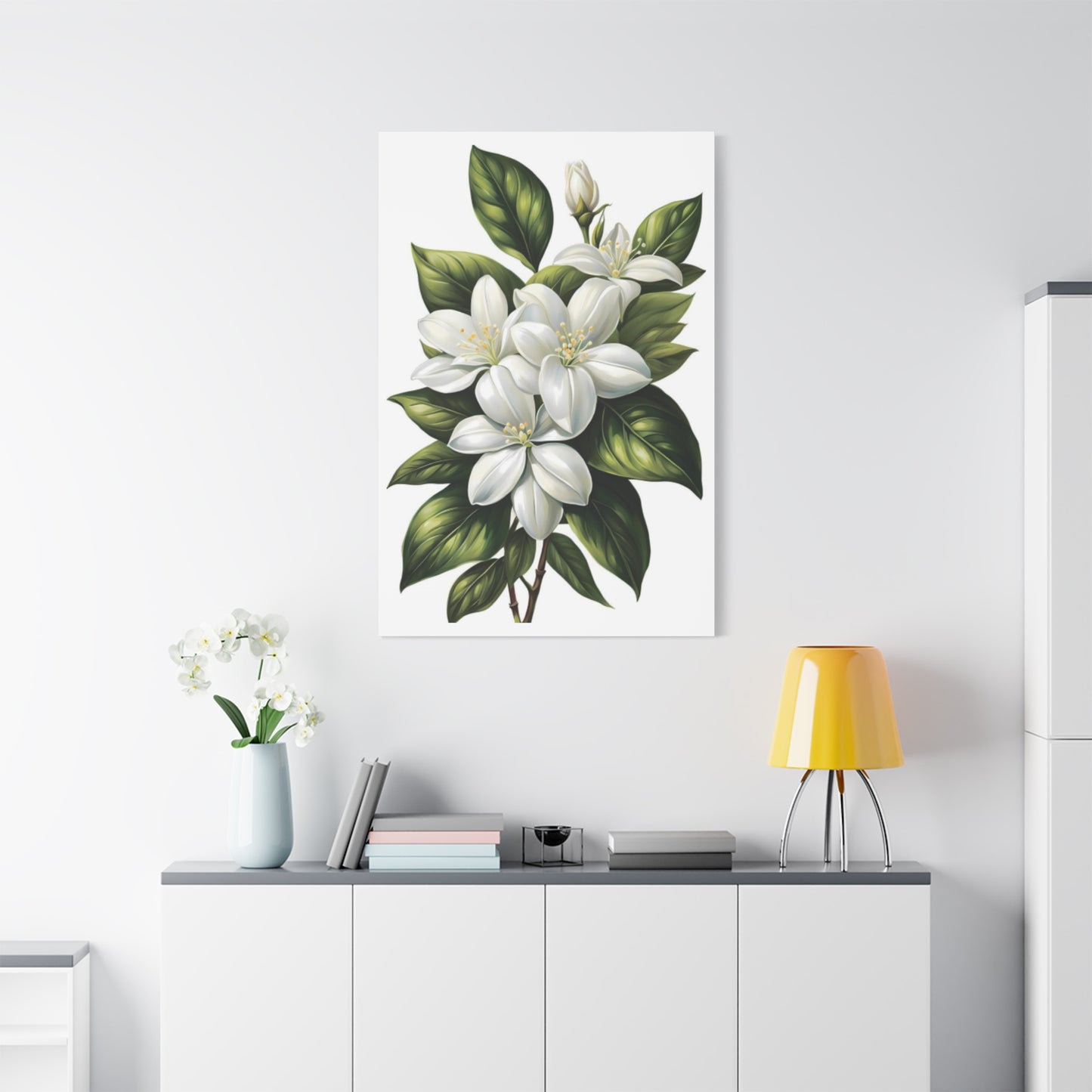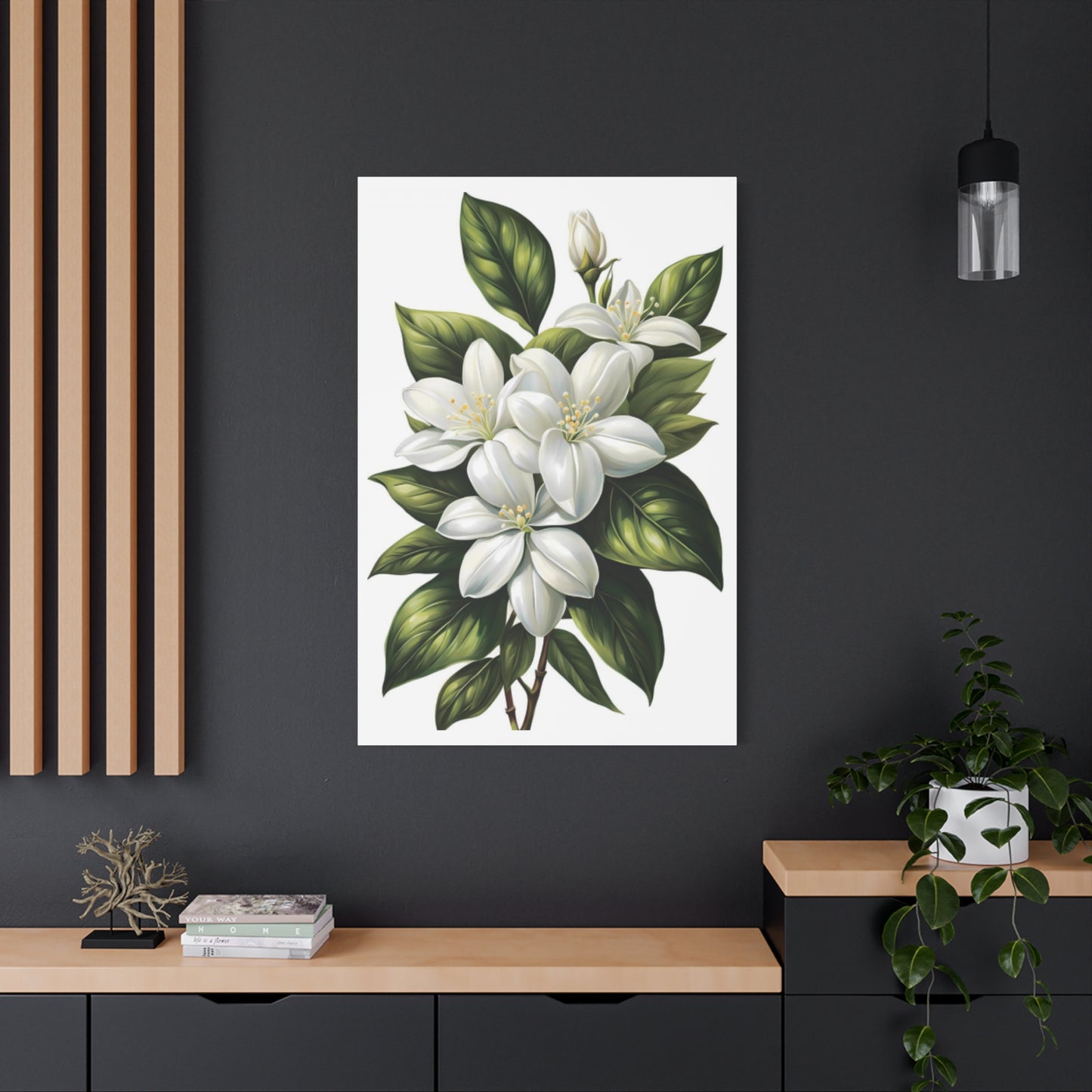Elegant White Magnolia Flower Paintings: Sophisticated Wall Art for Modern Interior Design
White magnolia flower painting wall art represents one of the most sought-after decorative elements in contemporary interior design. These magnificent botanical artworks capture the ethereal beauty and timeless elegance of magnolia blossoms, transforming any living space into a sanctuary of natural beauty and artistic sophistication. The pristine white petals of magnolia flowers have long symbolized purity, nobility, and perseverance, making them an ideal choice for homeowners seeking to infuse their interiors with meaningful and visually stunning artwork.
The popularity of white magnolia flower paintings has surged dramatically in recent years, as more people recognize the profound impact that thoughtfully selected wall art can have on the overall ambiance and aesthetic appeal of their homes. These delicate botanical illustrations serve as focal points that draw the eye while simultaneously creating a sense of calm and serenity throughout the space. Whether displayed in living rooms, bedrooms, dining areas, or office spaces, white magnolia flower paintings possess an inherent versatility that allows them to complement virtually any interior design style or color scheme.
Modern homeowners increasingly appreciate the way white magnolia flower painting wall art bridges the gap between traditional botanical illustration and contemporary artistic expression. These pieces often feature clean lines, minimalist compositions, and sophisticated color palettes that speak to current design trends while maintaining the timeless appeal of nature-inspired artwork. The subtle beauty of magnolia blossoms rendered in various artistic styles creates visual interest without overwhelming the existing decor, making them an excellent choice for both seasoned art collectors and those just beginning to curate their home collections.
History and Cultural Significance of Magnolia Flower Art
The artistic representation of magnolia flowers traces back centuries, with these magnificent blooms holding deep cultural significance across various civilizations and artistic traditions. In ancient Chinese culture, magnolia flowers were revered as symbols of feminine beauty and gentility, often appearing in traditional paintings, poetry, and decorative arts. Chinese artists masterfully captured the delicate essence of magnolia blossoms using traditional ink wash techniques, creating ethereal compositions that emphasized the flowers' natural grace and spiritual significance.
During the Victorian era, magnolia flowers gained prominence in Western art and culture, becoming associated with dignity, perseverance, and love of nature. Victorian botanical illustrators meticulously documented magnolia species through detailed scientific drawings, but these technical illustrations gradually evolved into more artistic interpretations that celebrated the flowers' aesthetic qualities rather than simply their botanical characteristics. The transition from scientific documentation to artistic expression marked a significant shift in how magnolia flowers were perceived and represented in visual arts.
The introduction of magnolia trees to European and American gardens during the 18th and 19th centuries sparked widespread fascination with these exotic blooms among artists and garden enthusiasts alike. Prominent painters of the time began incorporating magnolia flowers into their compositions, recognizing their potential as subjects for both still life paintings and larger landscape works. The flowers' distinctive form, with their large, waxy petals and striking architectural quality, provided artists with compelling visual elements that translated beautifully onto canvas.
Art Nouveau movement artists particularly embraced magnolia motifs, incorporating stylized versions of the flowers into decorative arts, wallpapers, and architectural elements. The movement's emphasis on natural forms and organic lines found perfect expression in the graceful curves and elegant proportions of magnolia blossoms. Artists like Louis Comfort Tiffany and Alphonse Mucha drew inspiration from magnolia flowers, creating iconic works that celebrated the intersection of nature and artistic design.
Contemporary interest in magnolia flower art reflects a broader cultural movement toward biophilic design and the integration of natural elements into modern living spaces. Today's artists continue to find inspiration in magnolia blossoms, creating works that range from photorealistic botanical illustrations to abstract interpretations that capture the essence and emotional impact of these remarkable flowers. The enduring appeal of magnolia flower art speaks to humanity's fundamental connection with nature and our desire to bring the beauty of the natural world into our daily living environments.
Artistic Styles and Techniques in White Magnolia Paintings
White magnolia flower paintings encompass an remarkable diversity of artistic styles and techniques, each offering unique interpretations of these magnificent blooms. Watercolor techniques remain among the most popular methods for capturing the delicate, translucent quality of magnolia petals. Artists working in watercolor often employ wet-on-wet techniques to create soft, flowing edges that mimic the natural graduation of color and light across the flower's surface. The medium's inherent transparency perfectly captures the luminous quality of white magnolia petals, allowing artists to build layers of subtle color that create depth and dimension while maintaining the flowers' characteristic ethereal appearance.
Oil painting techniques offer artists greater control over color mixing and blending, enabling the creation of highly detailed and realistic magnolia flower portraits. Master oil painters often employ traditional glazing techniques, building up multiple transparent layers of paint to achieve the lustrous, waxy appearance characteristic of magnolia petals. The medium's versatility allows for both smooth, photorealistic renderings and more expressive, painterly interpretations that emphasize brushwork and texture. Oil paintings of white magnolia flowers often feature rich, complex backgrounds that provide contrast and context for the pristine white blooms.
Acrylic painting techniques have gained popularity among contemporary artists working with magnolia flower subjects due to the medium's versatility and quick-drying properties. Acrylic paints can be manipulated to mimic both watercolor and oil painting effects, allowing artists to experiment with different approaches within a single composition. Modern acrylic techniques often incorporate mixed media elements, combining traditional painting methods with collage, texture paste, and other materials to create innovative interpretations of magnolia flowers that speak to contemporary aesthetic sensibilities.
Digital art and mixed media approaches have opened new possibilities for magnolia flower representation, allowing artists to combine traditional techniques with modern technology. Digital artists can manipulate photographs of magnolia flowers, creating stylized versions that emphasize specific aspects of the blooms' beauty while maintaining photographic accuracy. Mixed media artists often incorporate real botanical elements, such as pressed magnolia petals or leaves, into their compositions, creating textural contrasts that add depth and authenticity to their work.
Minimalist and abstract approaches to magnolia flower painting focus on essential forms, colors, and gestures rather than detailed botanical accuracy. These contemporary interpretations often reduce magnolia flowers to their most fundamental visual elements, using simplified shapes, limited color palettes, and bold compositional strategies to convey the emotional impact of the flowers rather than their literal appearance. Such approaches appeal to modern viewers who appreciate art that suggests rather than explicitly depicts, allowing for personal interpretation and emotional connection with the work.
Popular Color Palettes and Design Elements
The color palettes employed in white magnolia flower painting wall art extend far beyond the obvious choice of pristine white, encompassing sophisticated combinations that enhance the flowers' natural beauty while complementing contemporary interior design schemes. Monochromatic palettes featuring various shades of white, cream, and ivory create elegant, understated compositions that work beautifully in minimalist and Scandinavian-inspired interiors. These subtle variations in tone and temperature allow artists to create depth and interest while maintaining the serene, calming effect that makes white magnolia paintings so appealing to homeowners seeking peaceful, contemplative artwork.
Neutral color palettes incorporating soft grays, warm beiges, and gentle taupe tones provide gentle contrast that makes white magnolia flowers appear more luminous and three-dimensional. These earth-tone backgrounds often feature subtle texture and atmospheric effects that suggest natural environments without overwhelming the delicate beauty of the magnolia blooms. The interplay between cool white petals and warm neutral backgrounds creates visual balance that appeals to viewers and integrates seamlessly with most interior color schemes.
Pastel palettes featuring soft pink, lavender, pale yellow, and mint green accents add subtle color interest while maintaining the gentle, feminine aesthetic associated with magnolia flower art. These delicate color combinations often evoke feelings of spring, renewal, and natural beauty, making them particularly popular for bedrooms, nurseries, and other spaces where calm, nurturing atmospheres are desired. Artists working with pastel palettes often employ soft, diffused lighting effects that enhance the dreamy, romantic quality of their magnolia flower compositions.
Dramatic contrast palettes that juxtapose pure white magnolia flowers against deep, rich backgrounds create striking visual impact that works well in contemporary and modern interior settings. Dark backgrounds in colors such as charcoal, navy blue, or deep forest green make white magnolia petals appear to glow with inner light, creating dramatic focal points that command attention. These high-contrast approaches appeal to collectors who prefer bold, statement-making artwork that serves as the primary visual element in their room designs.
Seasonal color palettes that incorporate the changing colors associated with magnolia trees throughout the year offer dynamic alternatives to traditional all-white compositions. Spring palettes might include fresh green foliage and soft pink bud colors, while autumn versions could feature warm golden and amber tones that suggest the changing seasons. These seasonal approaches allow homeowners to rotate their magnolia flower artwork throughout the year, keeping their interior spaces feeling fresh and connected to the natural world's rhythms.
Selecting the Perfect Size and Scale
Choosing the appropriate size and scale for white magnolia flower painting wall art requires careful consideration of both the physical dimensions of the intended space and the desired visual impact of the artwork. Large-scale magnolia flower paintings, typically measuring 36 inches or more in width or height, create dramatic focal points that can anchor entire room designs. These substantial pieces work particularly well in spacious living areas, master bedrooms, or dining rooms where they can be appreciated from various viewing distances and angles. Large magnolia paintings often feature close-up, detailed views of individual blooms or small clusters of flowers, allowing viewers to appreciate the intricate beauty of petal textures, subtle color variations, and natural forms.
Medium-sized magnolia flower paintings, generally ranging from 16 to 35 inches in their largest dimension, offer versatility and adaptability that makes them suitable for a wide variety of interior applications. These moderately sized pieces can function as primary focal points in smaller rooms or as important supporting elements in larger spaces with multiple artwork installations. Medium-scale magnolia paintings often balance detailed flower renderings with contextual elements such as branches, leaves, or atmospheric backgrounds that provide visual interest without overwhelming the composition.
Small magnolia flower paintings, typically measuring less than 16 inches in their largest dimension, serve important roles in creating intimate viewing experiences and in groupings with other artwork pieces. These delicate, jewel-like compositions work beautifully in powder rooms, hallways, home offices, or as part of gallery wall arrangements where multiple pieces create collective visual impact. Small magnolia paintings often focus on specific aspects of the flowers, such as the graceful curve of a single petal or the subtle interplay of light and shadow across a bloom's surface.
Gallery wall arrangements featuring multiple magnolia flower paintings in various sizes create dynamic, museum-quality installations that can transform entire walls into artistic statements. These curated collections might include a mix of close-up floral studies, wider landscape views featuring magnolia trees, and abstract interpretations that explore different aspects of magnolia flower beauty. The key to successful gallery wall arrangements lies in maintaining visual coherence through consistent color palettes, complementary framing choices, and thoughtful spacing that allows each piece to be appreciated individually while contributing to the overall composition.
Oversized statement pieces, sometimes reaching dimensions of 60 inches or more, create immersive experiences that transform rooms into gallery-like spaces celebrating the beauty of magnolia flowers. These impressive artworks require significant wall space and careful integration with existing furnishings and architectural features. When successfully implemented, oversized magnolia flower paintings can create stunning visual anchors that define entire interior design schemes and provide endless opportunities for contemplation and appreciation of natural beauty.
Framing Options and Presentation Methods
The framing and presentation of white magnolia flower painting wall art significantly influences both the artwork's visual impact and its integration with existing interior design elements. Traditional wooden frames in natural finishes such as oak, walnut, or cherry provide warm, classic presentations that complement both contemporary and traditional interior styles. These natural wood frames often feature simple, clean profiles that allow the magnolia flower artwork to remain the primary focus while adding subtle warmth and texture to the overall presentation. The organic quality of wood framing creates natural harmony with botanical subject matter, reinforcing the connection between the artwork and the natural world.
Modern metal frames in finishes such as brushed silver, matte black, or champagne gold offer sleek, contemporary presentations that work particularly well with minimalist and industrial interior design schemes. These streamlined frames often feature narrow profiles that create clean, unobtrusive borders around magnolia flower paintings while providing necessary protection and support. Metal frames can be particularly effective when displaying series or collections of magnolia flower artworks, as their consistent profiles create visual unity while allowing individual pieces to maintain their distinct characteristics.
Floating frame presentations, where the artwork appears to hover within the frame without touching the frame edges, create modern, gallery-quality displays that add sophistication and professionalism to magnolia flower paintings. These specialized framing systems work particularly well with canvas paintings and can accommodate various matting configurations that enhance the artwork's visual impact. Floating frames often feature deeper profiles that create interesting shadow effects and dimensional qualities that add visual interest to the presentation.
Matting options provide additional opportunities to customize the presentation of magnolia flower paintings while creating visual breathing space around the artwork. White and cream mats offer clean, classic presentations that allow magnolia flower colors to appear more vibrant and luminous. Neutral gray mats can add sophistication and depth to the presentation while maintaining focus on the artwork itself. Colored mats in soft pastels or earth tones can create subtle color connections with interior design elements while enhancing specific aspects of the magnolia flower paintings.
Unframed and canvas presentations offer casual, contemporary alternatives that work well in modern, relaxed interior settings. Gallery-wrapped canvases with painted edges can be hung directly on walls without additional framing, creating clean, streamlined presentations that emphasize the artwork over decorative elements. These presentation methods often appeal to younger collectors and those preferring minimalist aesthetic approaches that reduce visual complexity while maintaining artistic impact.
Placement Strategies for Maximum Visual Impact
Strategic placement of white magnolia flower painting wall art can dramatically enhance both the artwork's visual impact and the overall aesthetic appeal of interior spaces. Living room installations often benefit from positioning magnolia flower paintings as focal points above sofas, mantels, or console tables where they can be easily appreciated by both residents and guests. The eye-level placement ensures optimal viewing angles while creating natural conversation starters that reflect the homeowner's appreciation for natural beauty and artistic quality. Large living rooms can accommodate multiple magnolia flower paintings arranged in thoughtful compositions that create visual rhythm and movement throughout the space.
Bedroom placement of magnolia flower paintings requires consideration of both aesthetic impact and psychological effects, as these private spaces serve as personal retreats where calming, beautiful artwork can enhance rest and relaxation. Positioning magnolia flower paintings above headboards creates romantic, hotel-like atmospheres while ensuring the artwork remains visible from various positions within the room. Alternative placement strategies might include positioning smaller magnolia flower paintings on side walls where they can be appreciated during quiet moments of reflection or preparation for sleep.
Dining room installations of magnolia flower paintings can enhance meal experiences by providing beautiful focal points that encourage conversation and create refined atmospheric qualities. The formal nature of many dining spaces makes them ideal locations for more substantial magnolia flower paintings that can withstand scrutiny during extended meal periods. Lighting considerations become particularly important in dining areas, where artwork must remain visible and appealing under both natural daylight and artificial evening illumination conditions.
Bathroom and powder room placements offer unique opportunities to display smaller magnolia flower paintings in intimate settings where they can be appreciated during private moments of daily routine. These spaces often benefit from artwork that provides uplifting, beautiful focal points while withstanding the humidity and temperature variations common in bathroom environments. Proper framing and protective measures ensure that magnolia flower paintings remain pristine in these challenging conditions while adding elegance and sophistication to utilitarian spaces.
Home office and workspace installations of magnolia flower paintings can provide inspirational focal points that enhance creativity and reduce stress during demanding work periods. The calming, natural beauty of magnolia flowers offers psychological benefits that can improve concentration and overall well-being during extended work sessions. Placement considerations in work environments must balance aesthetic impact with functional requirements, ensuring that artwork enhances rather than distracts from productive activities.
Decorating with Magnolia Flower Art
Incorporating white magnolia flower painting wall art into seasonal decorating schemes allows homeowners to maintain year-round connections with natural beauty while adapting their interior environments to reflect changing seasons and personal moods. Spring decorating with magnolia flower paintings naturally celebrates renewal, growth, and fresh beginnings that characterize this hopeful season. Pairing magnolia flower artwork with fresh green accessories, light fabrics, and flowering plants creates cohesive springtime environments that feel vibrant and alive. The pristine white petals of painted magnolia flowers provide perfect backdrops for seasonal color accents in soft pastels and fresh, clear tones that capture the essence of spring awakening.
Summer seasonal approaches might emphasize the cooling, serene qualities of white magnolia flower paintings as counterpoints to the intense heat and bright sunlight of warmer months. During summer seasons, magnolia flower artwork can provide visual relief and psychological cooling effects through their association with shade, tranquility, and natural beauty. Complementing magnolia paintings with light, airy fabrics, nautical color schemes, and natural materials creates refreshing interior environments that offer respite from summer's intensity while maintaining sophisticated aesthetic appeal.
Autumn decorating strategies can highlight the timeless, enduring qualities of magnolia flower paintings while incorporating seasonal elements that reflect the changing natural world. White magnolia flowers provide elegant contrast to autumn's rich, warm color palettes featuring deep oranges, golden yellows, and russet browns. The pure, clean appearance of painted magnolia blooms offers visual balance to autumn's abundant textures and patterns while maintaining connection to nature's beauty throughout the changing seasons.
Winter seasonal applications of magnolia flower paintings can provide much-needed reminders of natural beauty during months when outdoor flowering plants remain dormant. The pristine white petals of magnolia flowers naturally complement winter color schemes while offering promise of eventual spring return. During winter months, magnolia flower paintings can be enhanced with sophisticated metallic accents, rich textures, and warm lighting that creates cozy, nurturing environments despite harsh outdoor conditions.
Holiday decorating possibilities with magnolia flower paintings extend beyond traditional seasonal approaches to include integration with various cultural and personal celebrations throughout the year. The elegant, sophisticated appearance of magnolia flower artwork makes it suitable for formal entertaining periods while its natural beauty provides appropriate backgrounds for intimate family gatherings and personal celebrations.
Creating Gallery Walls with Magnolia Themes
Designing cohesive gallery walls featuring white magnolia flower painting wall art requires careful attention to visual balance, thematic consistency, and spatial relationships between individual pieces. Successful magnolia-themed gallery walls often begin with a central anchor piece, typically the largest or most visually striking magnolia flower painting in the collection, around which smaller complementary artworks can be arranged. This foundational approach ensures that the gallery wall maintains clear focal hierarchy while allowing viewers to appreciate both individual pieces and the collective artistic statement created by the entire arrangement.
Color coordination within magnolia gallery walls can be achieved through consistent use of complementary palettes that enhance rather than compete with the primary magnolia flower artwork. Incorporating pieces that share similar color temperatures, tonal values, or accent colors creates visual harmony while allowing for individual artistic expression within each piece. Additional botanical artwork featuring related flowers, leaves, or natural elements can expand the thematic scope while maintaining coherent aesthetic connections that tie the entire gallery wall together.
Size progression and spacing considerations play crucial roles in creating dynamic, visually interesting magnolia flower gallery walls that draw viewers in for closer examination while maintaining overall compositional balance. Alternating between larger statement pieces and smaller, more intimate works creates visual rhythm that prevents gallery walls from appearing static or predictable. Consistent spacing between pieces, typically ranging from two to four inches depending on overall scale, ensures that individual artworks maintain their distinct identities while contributing to the collective impact of the installation.
Mixed media integration within magnolia gallery walls might include incorporating photography, pressed botanical specimens, decorative objects, or sculptural elements that expand the thematic exploration beyond traditional painting mediums. These diverse elements add textural interest and dimensional qualities that create more engaging, museum-like installations. However, successful mixed media gallery walls require careful curation to ensure that all elements maintain thematic coherence and contribute positively to the overall aesthetic impact.
Lighting design for magnolia flower gallery walls requires consideration of both individual artwork illumination and overall ambient lighting that enhances the viewing experience without creating glare or uneven illumination. Picture lights, track lighting systems, or carefully positioned accent lights can highlight specific pieces while maintaining comfortable viewing conditions throughout the gallery wall area. Proper lighting allows the subtle beauty of magnolia flower paintings to be fully appreciated while creating inviting, gallery-quality presentations within residential settings.
Interior Design Styles That Complement Magnolia Art
Traditional interior design styles find natural harmony with white magnolia flower painting wall art through shared appreciation for timeless beauty, natural elements, and refined aesthetic sensibilities. Classic traditional interiors often feature rich wood furnishings, elegant fabrics, and sophisticated color palettes that provide ideal backdrops for magnolia flower artwork. The formal, cultivated appearance of painted magnolia flowers complements traditional design's emphasis on quality, permanence, and connection to historical decorative traditions. In traditional settings, magnolia flower paintings often serve as refined focal points that reinforce the style's commitment to enduring beauty and cultural sophistication.
Contemporary interior design embraces magnolia flower paintings for their clean, minimalist aesthetic qualities that align with modern preferences for uncluttered, serene living environments. The simple, elegant forms of magnolia flowers translate beautifully into contemporary art interpretations that emphasize essential visual elements while eliminating unnecessary decorative details. Contemporary interiors often feature neutral color palettes, natural materials, and abundant natural light that enhance the subtle beauty of magnolia flower artwork while maintaining the style's characteristic sense of calm and order.
Scandinavian design philosophy particularly embraces white magnolia flower paintings for their connection to nature, emphasis on light and airiness, and compatibility with the style's signature white and light wood color schemes. The hygge concept central to Scandinavian design finds perfect expression in the peaceful, contemplative qualities of magnolia flower artwork, which encourages slow, mindful appreciation of natural beauty. Magnolia paintings in Scandinavian interiors often feature simple, unadorned presentations that allow the artwork's inherent serenity to enhance the overall atmosphere of comfort and well-being.
Transitional design styles benefit from magnolia flower paintings' ability to bridge traditional and contemporary aesthetic approaches through their timeless subject matter rendered in various artistic styles ranging from classical to modern. These versatile artworks can adapt to transitional interiors that blend formal and casual elements, traditional and contemporary furnishings, and classic and current color schemes. Magnolia flower paintings provide stable, beautiful focal points that remain relevant as transitional spaces evolve and adapt over time.
Modern farmhouse and rustic design styles appreciate magnolia flower paintings for their celebration of natural beauty and connection to agricultural and garden traditions. The pristine white blooms of magnolia flowers complement farmhouse style's emphasis on fresh, clean aesthetics while their botanical subject matter reinforces the style's connection to rural and garden environments. In modern farmhouse settings, magnolia flower paintings often pair beautifully with natural wood elements, vintage accessories, and casual, comfortable furnishings that create welcoming, livable environments.
Caring for and Maintaining Your Magnolia Wall Art
Proper care and maintenance of white magnolia flower painting wall art ensures that these beautiful pieces retain their visual impact and artistic integrity for many years of enjoyment. Regular dusting with soft, clean brushes or microfiber cloths removes accumulated particles that can dull the appearance of painted surfaces while preventing more serious cleaning issues from developing. The gentle, circular motions used during dusting should always follow the natural grain or texture of the artwork surface while avoiding excessive pressure that might damage delicate painted details or protective varnish layers.
Climate control considerations play crucial roles in preserving magnolia flower paintings, as extreme temperature fluctuations, high humidity levels, or excessive dryness can cause canvas expansion and contraction that may lead to cracking, warping, or paint loss over time. Maintaining stable indoor humidity levels between 45-55% and avoiding placement near heating vents, air conditioning units, or exterior walls that experience temperature variations helps protect artwork from environmental damage while ensuring optimal viewing conditions throughout changing seasons.
Light exposure management requires balancing the desire to properly illuminate and display magnolia flower paintings with the need to protect them from harmful ultraviolet radiation and excessive light levels that can cause fading, color shifting, or deterioration of painting materials. Direct sunlight should be avoided completely, while controlled artificial lighting using LED fixtures with UV filtering capabilities provides safe illumination that enhances artwork appreciation without risking damage. Rotating artwork periodically or using protective UV-filtering glazing can provide additional protection for particularly valuable or sensitive pieces.
Professional conservation services should be considered for valuable magnolia flower paintings showing signs of damage, age-related deterioration, or requiring specialized cleaning beyond routine maintenance capabilities. Qualified art conservators possess the expertise and specialized materials necessary to address serious conservation issues while preserving the artistic integrity and value of important artwork. Regular professional assessments can identify potential problems before they become serious, potentially saving significant restoration costs while ensuring continued enjoyment of beautiful magnolia flower paintings.
Storage considerations for magnolia flower paintings not currently displayed require careful attention to environmental conditions, protective materials, and handling procedures that prevent damage during inactive periods. Artwork should be stored in clean, dry environments with stable temperatures and humidity levels, wrapped in acid-free materials, and positioned to avoid pressure on painted surfaces. Proper storage procedures ensure that magnolia flower paintings remain in excellent condition for future display while protecting the investment represented by quality artwork acquisitions.
Custom Commission Options and Personalization
Commissioning custom white magnolia flower painting wall art allows collectors to create truly unique pieces that perfectly match their interior design requirements, personal preferences, and specific spatial considerations. Working directly with artists provides opportunities to specify dimensions, color palettes, compositional elements, and stylistic approaches that may not be available in existing artwork collections. Custom commissions ensure perfect integration with existing interior design schemes while creating one-of-a-kind pieces that reflect individual taste and artistic vision.
Personalization options for magnolia flower paintings might include incorporating specific magnolia varieties, seasonal elements, or environmental contexts that hold personal significance for collectors. Artists can work from provided photographs, garden specimens, or detailed descriptions to create magnolia flower paintings that capture specific memories, locations, or emotional connections. These personalized elements transform artwork from beautiful decorative pieces into meaningful expressions of personal history and individual aesthetic preferences.
Collaborative design processes between artists and collectors often produce the most satisfying custom magnolia flower paintings, as ongoing communication ensures that artistic interpretations align with collector expectations while allowing for creative input and professional expertise from experienced artists. Initial consultations might include discussion of intended placement, size requirements, color preferences, and stylistic approaches, followed by preliminary sketches or studies that allow for refinement before final execution begins.
Timeline considerations for custom magnolia flower paintings typically range from several weeks to several months depending on size, complexity, and artist availability, requiring advance planning for collectors hoping to coordinate artwork completion with interior design projects or special occasions. Many artists require deposits or partial payments during the commission process, with final payment due upon completion and collector approval. Clear communication regarding timelines, payment schedules, and revision procedures helps ensure smooth commission experiences for both artists and collectors.
Pricing structures for custom magnolia flower paintings vary widely based on artist reputation, artwork size, complexity, and materials used, generally commanding premium prices compared to existing artwork due to the personalized attention and unique nature of commissioned pieces. However, many collectors find the additional investment worthwhile for the opportunity to own truly unique artwork that perfectly meets their specific requirements while supporting individual artists and their creative endeavors. Custom commissions also provide opportunities to establish ongoing relationships with artists for future projects or collection development.
Digital and Mixed Media Approaches
Contemporary digital art techniques have revolutionized the creation and presentation of white magnolia flower painting wall art, offering artists new tools for exploring botanical subjects while providing collectors with innovative alternatives to traditional painting mediums. Digital painting software allows artists to experiment with effects, textures, and compositional approaches that might be difficult or impossible to achieve using conventional materials while maintaining the ability to create final products suitable for high-quality printing and display.
Mixed media approaches combining traditional painting techniques with digital elements, collage materials, or three-dimensional components create unique magnolia flower artworks that challenge conventional boundaries between different artistic mediums. These innovative pieces might incorporate actual pressed magnolia petals, textured papers, metallic leaf applications, or digital photographic elements that enhance the overall visual impact while maintaining focus on the natural beauty of magnolia flowers. Mixed media techniques appeal to contemporary collectors interested in cutting-edge artistic approaches that reflect current technological and creative possibilities.
Print-on-demand technology has democratized access to magnolia flower artwork by allowing artists to create limited quantities of high-quality reproductions without significant upfront investment in printing or inventory. These modern printing methods can produce stunning results on various substrates including canvas, fine art papers, metal, or acrylic materials that offer different aesthetic qualities and display characteristics. Print-on-demand systems also enable customization options such as size variations, framing choices, or material selections that allow collectors to tailor purchases to specific requirements.
Interactive and multimedia presentations of magnolia flower art might include augmented reality applications that allow viewers to experience artwork in their own spaces before purchasing, or digital frames that can display rotating collections of magnolia flower images while maintaining the appearance of traditional framed artwork. These technological approaches appeal to tech-savvy collectors who appreciate innovation while maintaining connection to natural beauty and artistic expression.
Digital archiving and documentation of magnolia flower paintings ensures preservation of artistic works while enabling various reproduction and presentation options that extend the reach and impact of original artwork. High-resolution digital files can capture subtle details, color variations, and textural qualities that support various output options while providing backup documentation for conservation or insurance purposes. Digital archives also facilitate online gallery presentations, virtual exhibitions, or educational applications that increase access to beautiful magnolia flower art.
Photography and Botanical Accuracy in Magnolia Art
The relationship between photographic reference materials and artistic interpretation plays a crucial role in creating convincing and beautiful white magnolia flower painting wall art that captures both the scientific accuracy and emotional impact of these magnificent blooms. Many contemporary artists work from high-quality photographic references that document specific magnolia varieties, growth patterns, and seasonal characteristics while providing detailed information about petal structure, leaf formation, and natural color variations that inform their artistic interpretations.
Botanical accuracy considerations balance scientific correctness with artistic vision, ensuring that magnolia flower paintings remain recognizable and true to nature while allowing for creative interpretation that enhances aesthetic appeal and emotional impact. Artists with strong botanical backgrounds often produce magnolia flower paintings that satisfy both scientific and artistic criteria while educating viewers about the natural world through beautiful, accurate representations that celebrate both artistic skill and natural design.
Field study and plein air painting techniques allow artists to observe magnolia flowers directly in their natural environments, capturing subtle qualities of light, atmosphere, and seasonal context that might be lost in photographic references alone. Working outdoors provides opportunities to understand how magnolia flowers respond to changing light conditions throughout the day while experiencing the sensory richness that surrounds these beautiful plants in their natural habitats.
Scientific illustration techniques applied to artistic magnolia flower paintings can produce works that serve dual purposes as both educational resources and beautiful artwork suitable for display in homes, offices, or educational settings. These detailed, accurate renderings often appeal to collectors with scientific backgrounds or interests in botanical education while maintaining the aesthetic qualities that make magnolia flower art appealing to general audiences.
Documentation and reference collection activities support ongoing artistic development while building resources for future magnolia flower painting projects. Many artists maintain extensive photograph libraries, pressed specimen collections, or detailed field notes that inform their work while providing inspiration for new compositions and artistic approaches. These research activities often lead to deeper understanding and more authentic artistic interpretations that resonate with viewers who appreciate both natural beauty and artistic skill.
Therapeutic Benefits of Magnolia Art
The psychological impact of white magnolia flower painting wall art extends beyond mere aesthetic appreciation to encompass measurable effects on mood, stress levels, and overall mental well-being that make these beautiful pieces particularly valuable additions to residential and therapeutic environments. Research in environmental psychology has demonstrated that exposure to nature imagery, including botanical artwork like magnolia flower paintings, can reduce cortisol levels, lower blood pressure, and promote feelings of calm and relaxation that contribute to improved mental health and quality of life.
Biophilic design principles recognize the fundamental human need for connection with nature and natural elements, making magnolia flower paintings important tools for creating healthier interior environments that support psychological well-being. The pristine beauty and serene appearance of white magnolia flowers trigger positive emotional responses that can counteract the stress and anxiety often associated with modern urban living conditions. Incorporating magnolia flower artwork into daily living environments provides ongoing opportunities for visual respite and emotional restoration throughout busy, demanding days.
Meditation and mindfulness practices often benefit from focus objects that encourage contemplation and present-moment awareness, making magnolia flower paintings ideal additions to meditation spaces, yoga studios, or quiet corners designated for relaxation and reflection. The intricate details, subtle color variations, and peaceful compositions typical of magnolia flower art provide rich visual content for sustained attention while promoting the calm, centered mental states conducive to effective meditation practice.
Therapeutic applications of magnolia flower artwork include use in healthcare settings, counseling offices, or rehabilitation facilities where beautiful, calming imagery can support healing processes and provide positive focal points for patients and clients. The universal appeal and non-threatening nature of floral subject matter makes magnolia flower paintings appropriate for diverse populations and age groups while contributing to therapeutic environments that promote recovery and well-being.
Art therapy applications might incorporate magnolia flower themes as subjects for creative exploration, allowing individuals to express emotions, process experiences, or develop coping strategies through artistic engagement with these beautiful natural forms. The symbolic associations of magnolia flowers with renewal, perseverance, and natural beauty provide rich metaphorical content for therapeutic work while offering accessible subject matter for individuals with varying artistic abilities and experience levels.
Conclusion:
Elegant white magnolia flower paintings bring a timeless sense of refinement and natural beauty to modern interior design. Their delicate petals, painted in crisp tones of white and cream, symbolize purity, resilience, and grace, making them a perfect choice for homeowners seeking both visual appeal and deeper meaning in their décor. Whether hung in a living room, dining area, bedroom, or hallway, these sophisticated artworks create an atmosphere of calm, elegance, and contemporary charm.
What makes magnolia flower paintings particularly compelling is their ability to balance minimalism with warmth. In modern design, where clean lines and uncluttered spaces often dominate, the magnolia provides a soft, organic element that prevents interiors from feeling sterile. The neutral yet striking beauty of the white magnolia complements a wide range of color palettes, from monochrome and muted earth tones to bold, modern contrasts. This versatility ensures that magnolia paintings seamlessly adapt to different styles, whether minimalist, Scandinavian, transitional, or even luxe-inspired spaces.
Beyond aesthetics, magnolia paintings carry symbolic significance. Long celebrated in art and culture, magnolias represent dignity, endurance, and harmony with nature. By incorporating this imagery into wall art, homeowners infuse their living spaces with not only decorative elegance but also a layer of thoughtful symbolism that resonates with themes of serenity and resilience. This makes magnolia art more than just a design choice—it becomes a reflection of values and atmosphere within the home.
The scale and placement of magnolia flower paintings further enhance their design impact. Large canvases make bold, commanding statements, ideal for feature walls or expansive living areas, while smaller framed prints add subtle sophistication to more intimate settings. In combination with natural materials such as wood, stone, or linen textiles, these artworks help establish cohesive interiors that feel both modern and grounded in nature’s timeless beauty.
Lighting also plays a crucial role in magnolia art’s transformative quality. When illuminated with soft ambient light or strategically placed spotlights, the delicate white petals radiate a calming presence that elevates the entire room. This interplay of light and texture enhances the artwork’s depth, ensuring that it captivates from every angle.
In essence, Elegant White Magnolia Flower Paintings: Sophisticated Wall Art for Modern Interior Design transcends simple decoration. It embodies the fusion of natural grace, artistic detail, and modern sophistication, offering homeowners a way to elevate their spaces with beauty and meaning. By choosing magnolia art, one embraces both timeless elegance and the serene refinement that defines contemporary interior design.

















